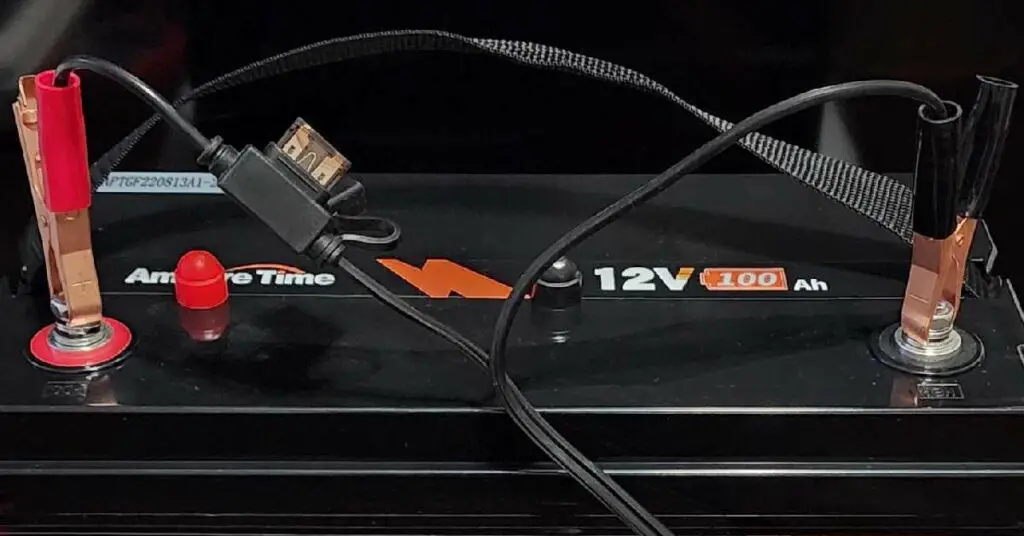
A car is not merely a medium of transportation but a symbol of freedom, an embodiment of human ingenuity, and a trusted companion in our day-to-day endeavors. Every component of a car plays a crucial role in its overall performance, with the car battery being one of the most pivotal. Maintaining its health is essential to ensuring the smooth functioning of your vehicle. But what happens when a seemingly small issue, like a 0.2 amp battery drain, begins to affect your car battery’s life and efficiency? In this comprehensive guide, we dive deep into understanding this common but often overlooked problem.
Automotive issues often seem complex and overwhelming, especially when it involves the electrical system of your vehicle. However, understanding these issues does not always require professional training, and a little knowledge can go a long way. This guide aims to empower car owners, automobile enthusiasts, and anyone facing car battery problems by offering an in-depth understanding of the issue at hand, its causes, and potential solutions.
Over the next sections, we will navigate through the maze of the automotive electrical system, demystify the 0.2 amp battery drain issue, and discuss its impact on your vehicle’s performance. Most importantly, we will provide a comprehensive guide on how you can detect and solve this problem, thereby ensuring the long-term health of your car battery. This detailed discussion, combined with practical advice, aims to enrich your knowledge and equip you with the skills necessary to handle this common car battery problem.
Understanding Car Batteries
To appreciate the complexities of a 0.2 amp battery drain, it’s first essential to comprehend the fundamental workings of car batteries. A car battery is a rechargeable battery that primarily supplies electric energy to an automobile. Commonly known as an SLI battery (starting-lighting-ignition), it is responsible for starting the engine, powering the lights, and supplying the necessary voltage to the ignition system, fuel system, and other essential elements of the vehicle.
Car batteries are typically 12-volt lead-acid type batteries, composed of six cells connected in series. Each cell produces approximately 2.1 volts, cumulatively providing the necessary 12.6 volts when fully charged. A chemical reaction within the cells creates this voltage, as lead and lead dioxide, the active materials on the battery’s plates, react with sulfuric acid in the electrolyte to produce lead sulfate, water, and electrons. These electrons form the current that your car uses to operate its electrical systems.
A healthy car battery is the lifeblood of any vehicle. It ensures seamless start-ups, efficient operation of electrical components, and overall smooth rides. However, batteries do age and degrade over time, eventually requiring replacement. Certain factors, such as frequent short journeys, extreme temperatures, and excessive strain on the battery from the car’s electrical equipment, can expedite this aging process.
However, one common yet often unnoticed issue that can compromise your battery’s health is a persistent battery drain or parasitic draw, even when the car is switched off. One such instance is a 0.2 amp drain, which, though it may seem minuscule, can have a significant impact on your battery’s life and performance. In the following sections, we delve into the specifics of this battery drain, its causes, and how it affects your car’s performance.
What is a 0.2 Amp Battery Drain?
With a basic understanding of car batteries under our belt, we can now proceed to dissect the concept of a 0.2 amp battery drain, a subject often regarded as a trivial matter by many car owners due to its seemingly minuscule size. However, in the realm of automotive electronics, even minor issues like these can wield a significant impact over time, especially when left unchecked.
A 0.2 amp battery drain, often referred to as a parasitic draw, is a situation where your car’s electrical system continues to draw power from the battery even when the ignition is off. This phenomenon is not entirely abnormal; car batteries are designed to provide a small amount of electricity to maintain certain functionalities, such as preserving radio presets, powering security systems, and keeping onboard computers running.
However, a healthy electrical system should only draw a minimal current, typically below 0.050 amps, when the car is off. When this number starts creeping up, as in the case of a 0.2 amp drain, it signifies a problem that could potentially drain your battery significantly over time. Think of it as a small leak in a water tank. While the leak may appear insignificant at first glance, it can eventually empty the tank if left unresolved.
Understanding this issue involves recognizing that every electrical device in your car, from the radio to the dome lights, contributes to the overall electrical load on your battery. In normal circumstances, these devices only draw power when needed, and the electrical system manages their power consumption efficiently. However, various factors can cause one or more of these devices to draw power continuously, leading to an undesirable battery drain.
The severity of a 0.2 amp battery drain may not be immediately apparent. You might not notice any substantial impact on your daily driving experience, especially if you drive long distances frequently, as the alternator would have sufficient time to recharge the battery. However, if you typically drive short distances, or if your car remains idle for extended periods, a 0.2 amp drain can result in a dead battery over time.
Causes of a 0.2 Amp Battery Drain
Identifying the source of a 0.2 amp battery drain in your car can feel like finding a needle in a haystack. Given the myriad of electrical devices and systems present in modern vehicles, the cause could stem from numerous places. Nevertheless, understanding the common culprits can significantly simplify this process and guide you towards the potential troublemakers.
1. Faulty Electrical Devices: Devices like car radios, GPS units, chargers, and lighting systems, when malfunctioning, can draw power continuously, leading to a battery drain. A common instance is the dome light remaining on due to a faulty switch, causing a persistent drain on the battery.
2. Damaged Wiring or Fuses: Aged or damaged wiring can cause electrical leakages, leading to unwanted power drain. Similarly, a blown fuse could result in a continuous power draw from certain car devices.
3. Alarm Systems: While car security systems are crucial for your vehicle’s safety, a faulty alarm system can draw more power than it should, leading to a battery drain.
4. Onboard Computers: Modern cars come with onboard computers that control various aspects of the vehicle. These computers, although designed to go into ‘sleep’ mode when not in use, can malfunction and stay ‘awake,’ consuming power continuously.
5. Aftermarket Devices: Devices installed after purchasing the car, such as sound systems, dash cams, or additional lighting systems, can also contribute to a battery drain if not installed or wired properly.
Uncovering the cause of a 0.2 amp battery drain often requires systematic troubleshooting and a process of elimination. The good news is, once the problematic component or system has been identified, resolving the issue becomes significantly more manageable. With an understanding of the potential causes in mind, you’ll be better equipped to diagnose and address this battery draining issue.
Effects of a 0.2 Amp Battery Drain
The consequences of a 0.2 amp battery drain might not seem significant initially, but over time, its impact on your vehicle’s performance can be profound. This continuous drain of power, however small it might appear, affects your car battery’s health and, consequently, the functionality of the entire vehicle. Let’s examine some of the main effects this issue can have on your car.
1. Shortened Battery Life: One of the most direct effects of a 0.2 amp battery drain is a reduction in your battery’s lifespan. Car batteries, while resilient, are not designed to handle continuous draining and recharging cycles. This parasitic drain forces the battery to work harder than necessary, leading to premature aging and, ultimately, failure.
2. Strained Alternator: The alternator’s job is to recharge the battery while the car is running. However, with an ongoing battery drain, the alternator has to work overtime to keep the battery charged, causing unnecessary strain and potential premature failure of the alternator itself.
3. Frequent Jump-starts: A persistent battery drain can often leave you with a car that won’t start, especially after sitting idle overnight or for extended periods. This situation may require frequent jump-starts, which, aside from being inconvenient, can also be harmful to the battery in the long run.
4. Affected Vehicle Performance: Since the car battery plays a vital role in powering electrical components and aiding the engine’s performance, a weakened battery due to persistent drain can adversely impact overall vehicle performance. You may notice sluggish starts, dimmed lights, or compromised functionality of various electrical components.
5. Potential Breakdowns: In the worst-case scenario, a persistent battery drain, if left unaddressed, could lead to your car breaking down in the middle of a journey. The risk is even greater during cold weather, as car batteries need to deliver more power to start the engine.
Detecting a 0.2 Amp Battery Drain
Now that we have discussed the causes and effects of a 0.2 amp battery drain, the next logical step is learning how to detect this issue in your car. This process can be a bit technical, but with the right tools and a systematic approach, even a car owner with modest mechanical knowledge can undertake this task.
To detect a battery drain, you’ll need a multimeter, a device that can measure voltage, current, and resistance. It’s a handy tool for troubleshooting electrical problems in cars. Before we proceed, remember to ensure your safety by wearing protective gear and disconnecting the battery before testing.
Step 1: Disconnect the negative battery cable from your car’s battery.
Step 2: Set your multimeter to measure current (amps).
Step 3: Connect the multimeter in series between the negative battery post and the negative battery cable. The multimeter will now measure the amount of parasitic draw from your battery.
Step 4: Observe the reading on the multimeter. A healthy system should have a parasitic draw of less than 0.050 amps. If the reading is around 0.2 amps or more, you have a parasitic draw that needs to be addressed.
The steps above will only identify if a parasitic draw exists. The next step is to identify the source of the drain. This involves systematically removing fuses and observing changes in the current reading until you identify the circuit causing the excess drain. Once identified, you can then check all components on that circuit to pinpoint the faulty device.
Remember, this process can be time-consuming and may require a fair bit of patience. But the result is an empowered car owner, capable of diagnosing their own vehicle’s electrical issues.
Solving a 0.2 Amp Battery Drain
After successfully detecting a 0.2 amp battery drain and identifying the troublesome circuit or device, it’s time to address the problem. Solutions can range from simple fixes to complex repairs. However, armed with knowledge and a systematic approach, you can effectively tackle this issue.
1. Faulty Electrical Devices: If a particular device is found to be the culprit, check its switch or power control mechanism. Sometimes, the solution is as simple as replacing a faulty switch or unplugging a device. However, in some cases, you might need to replace the device entirely.
2. Damaged Wiring or Fuses: Inspect the wiring related to the problematic circuit. Look for any signs of wear, tear, or damage. If found, replacing the damaged wiring should rectify the issue. Similarly, replace any blown or damaged fuses.
3. Alarm Systems: If your car’s alarm system is the source of the drain, it might require professional inspection. The problem could stem from faulty wiring, or the system may need a reset or replacement.
4. Onboard Computers: In case an onboard computer is causing the drain, a professional diagnostic and repair would be recommended. The computer might need a software update, or in some instances, a replacement.
5. Aftermarket Devices: For any aftermarket devices causing the drain, ensure they are properly installed and their wiring is correct. You might need to refer to a professional or the installation guide for the device.
While these solutions are generally effective, it’s essential to remember that each vehicle is unique, and solutions may vary depending on the specific problem. If you’re uncomfortable or unsure about performing these tasks, professional assistance is advisable.
Understanding how to detect and resolve a 0.2 amp battery drain equips you with valuable knowledge to keep your car’s battery healthy and ensure its longevity.
Preventing Future Battery Drains
Having walked through the journey of understanding, detecting, and resolving a 0.2 amp battery drain, we now turn our attention to the future. An integral part of maintaining the health of your car battery involves taking steps to prevent similar issues from recurring. Here are some preventative measures to help you avoid future battery drain problems.
1. Regular Inspections: Regularly inspecting your car’s electrical systems and devices can help catch potential issues early. This includes checking lights, switches, and devices for any irregularities, and also examining the battery and its connections for signs of wear or corrosion.
2. Proper Device Usage: Ensure you switch off all devices before turning off your car. This includes interior lights, radios, and any aftermarket devices. Leaving devices on can lead to unwanted battery drain.
3. Maintenance of Aftermarket Devices: If you have any aftermarket devices installed, ensure they are correctly installed and are functioning properly. Incorrectly installed devices can often cause battery drains.
4. Regular Battery Tests: Regular battery tests can help you keep track of your battery’s health and catch any potential issues early. It’s recommended to test your battery every time you service your car.
5. Professional Servicing: Regular professional servicing of your car ensures that all systems, including electrical systems, are working properly and are in good condition. Professionals can often catch and fix potential issues before they cause problems.
By implementing these preventative measures, you can significantly reduce the chances of future battery drain issues, ensuring your car battery remains healthy and efficient for longer. Remember, a healthy car battery contributes to a smooth and reliable driving experience.

As a seasoned mechanic and proud owner of three successful car workshops, I’ve dedicated my life to helping people just like you overcome their everyday automotive challenges. I created this website as a labor of love, with a simple mission: to make car maintenance and repairs more accessible and approachable for the “average joe.”
